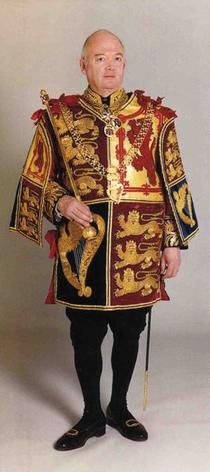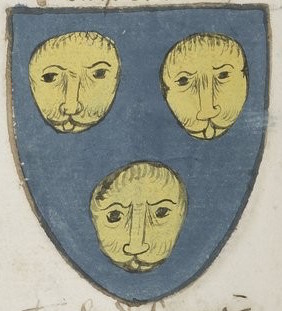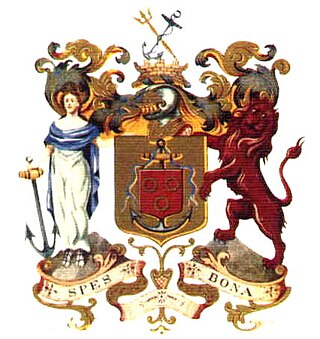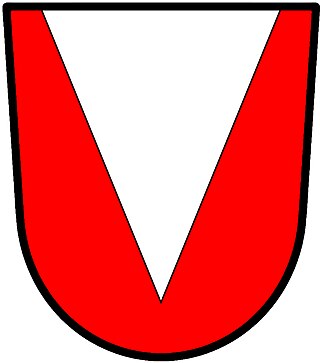
Earl Mountbatten of Burma is a title in the Peerage of the United Kingdom. It was created on 28 October 1947 for Rear Admiral Louis Mountbatten,1st Viscount Mountbatten of Burma. The letters patent creating the title specified the following remainder in the absence of heirs male:
...to his eldest daughter Patricia Edwina Victoria,Baroness Brabourne...and the heirs male of her body lawfully begotten;and in default of such issue to every other daughter lawfully begotten of the said Louis Francis Albert Victor Nicholas,Viscount Mountbatten of Burma,successively in order of seniority of age and priority of birth and to the heirs male of their bodies lawfully begotten...

The coat of arms of the territory of Nunavut was granted by a warrant of Roméo LeBlanc,Governor General of Canada,dated 31 March 1999,one day before the territory of Nunavut,Canada,was created. The same document specified the flag of Nunavut.

Duke of Fife is a title in the Peerage of the United Kingdom that has been created twice,in both cases for Alexander Duff,1st Duke of Fife and 6th Earl Fife,who in 1889 married Princess Louise,the eldest daughter of Albert Edward,Prince of Wales. The dukedom of Fife was created for a member of the British royal family by marriage,since the first holder's wife was a granddaughter of Queen Victoria.

The Worshipful Company of Drapers,informally known as the Drapers' Company and formally known as The Master and Wardens and Brethren and Sisters of the Guild or Fraternity of the Blessed Mary the Virgin of the Mystery of Drapers of the City of London,was probably the first corporate body in England to be granted a coat of arms,on 10 March 1438/9 by Sir William Bruges,Garter King of Arms. The patent dated 1439 is the earliest surviving such grant of arms made to a corporate body in England. The arms were modified in 1561,when the crest was added and the lion supporters granted. These grants were superseded in 1613 with minor modifications. The Queen as Freeman of the Fraternity possesses a small jewelled and enamelled brooch depicting its arms and circumscribed by the motto,known as "The Drapers Company Badge". She wears the brooch when performing royal engagements connected with the Drapers Company. The modern blazon is:Azure,three clouds radiated proper each adorned with a triple crown or. The triple crown contains a cap gules.

The coat of arms of Toronto is a heraldic symbol used to represent the city Toronto. Designed by Robert Watt,the Chief Herald of Canada at the time,for the City of Toronto after its amalgamation in 1998. The arms were granted by the Canadian Heraldic Authority on 11 January 1999.
Arthur Plantagenet,1st Viscount Lisle,KG was an illegitimate son of the English king Edward IV,half-brother-in-law of Henry VII,and an uncle of Henry VIII,at whose court he was a prominent figure and by whom he was appointed Lord Deputy of Calais (1533–40). The survival of a large collection of his correspondence in the Lisle Letters makes his life one of the best documented of his era.

The coat of arms of Sunderland is the official heraldic arms of the City of Sunderland in England.

The Canadian Heraldic Authority is part of the Canadian honours system under the Canadian monarch,whose authority is exercised by the Governor General of Canada. The authority is responsible for the creation and granting of new coats of arms,flags,and badges for Canadian citizens,government agencies,municipal,civic and other corporate bodies. The authority also registers existing armorial bearings granted by other recognized heraldic authorities,approves military badges,flags,and other insignia of the Canadian Forces,and provides information on heraldic practices. It is well known for its innovative designs,many incorporating First Nations symbolism.

The coat of arms of Sierra Leone,were developed by the College of Arms and granted in 1960.

John Philip Brooke Brooke-Little was an English writer on heraldic subjects,and a long-serving herald at the College of Arms in London. In 1947,while still a student,Brooke-Little founded the Society of Heraldic Antiquaries,now known as the Heraldry Society and recognised as one of the leading learned societies in its field. He served as the society's chairman for 50 years and then as its president from 1997 until his death in 2006.

The McGhee family is an ancient lowland family of Scotland,established as landowners in Galloway since at least the 13th century. Both the Clan Donald and the Clan Mackay claim it as a sept. Historically,however,the Mackays are in fact an offshoot of this family rather than vice versa. The ancient origins of the McGhees are uncertain,though they were probably Gaels from Ireland who took part in the conquest of Galloway between the 9th and 11th centuries. Their property in Kirkcudbrightshire was significantly extended during the reign of the Stuarts. The family has always been self-consciously lowland and,almost uniquely among prominent Scottish families,remained entirely indifferent to the Clan system,as historians have noted:
"With such a variety of spellings many held lands,bore personal arms and sometimes held important positions and yet none,other than the Chief of Mackay,has been recognised in the chiefship of the kindred."

The coat of arms of Cape Town is the traditional symbol of the municipality of Cape Town. The original arms from the 20th century are no longer in official use,though no new arms have yet been adopted.

The coat of arms of Wigan Metropolitan Borough Council was granted by the College of Arms in 1974.
Clan Strange,also known as Clan Strang,is a Lowland Scottish clan.

The de Trafford Baronetcy,of Trafford Park in the County Palatine of Lancaster is a title in the Baronetage of the United Kingdom.

In heraldry,a pile is a charge usually counted as one of the ordinaries. It consists of a wedge emerging from the upper edge of the shield and converging to a point near the base. If it touches the base,it is blazoned throughout.

Horwich Town Council is a local authority with limited powers and covers the town and civil parish of Horwich in the Metropolitan Borough of Bolton,Greater Manchester,England. It is made up of fourteen elected Town Councillors,representing eight electoral wards. Six of the Wards elect two Councillors while two other Wards elect one Councillor.

Sir John III Chichester of Hall was member of parliament for Lostwithiel in Cornwall in 1624.

The coat of arms of the London Borough of Camden were granted on 10 September 1965. The borough was formed by the merger of three former boroughs,namely the Metropolitan Borough of Hampstead,the Metropolitan Borough of Holborn and the Metropolitan Borough of St. Pancras,from whose arms elements were utilised in the arms of the new borough.

The coat of arms of the London Borough of Hackney is the official heraldic arms of the London Borough of Hackney,England. The coat of arms were granted on 25 July 1969.



















